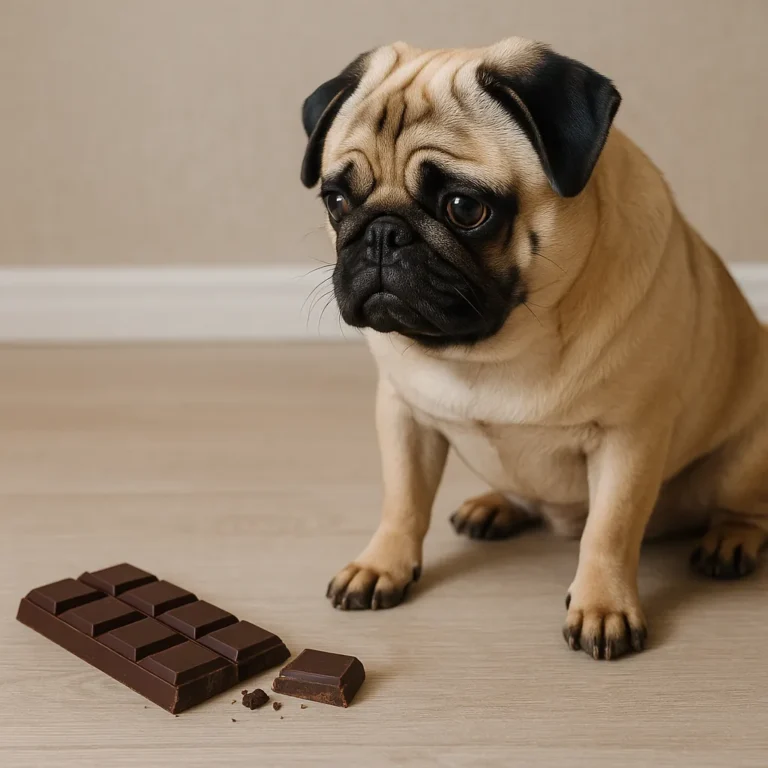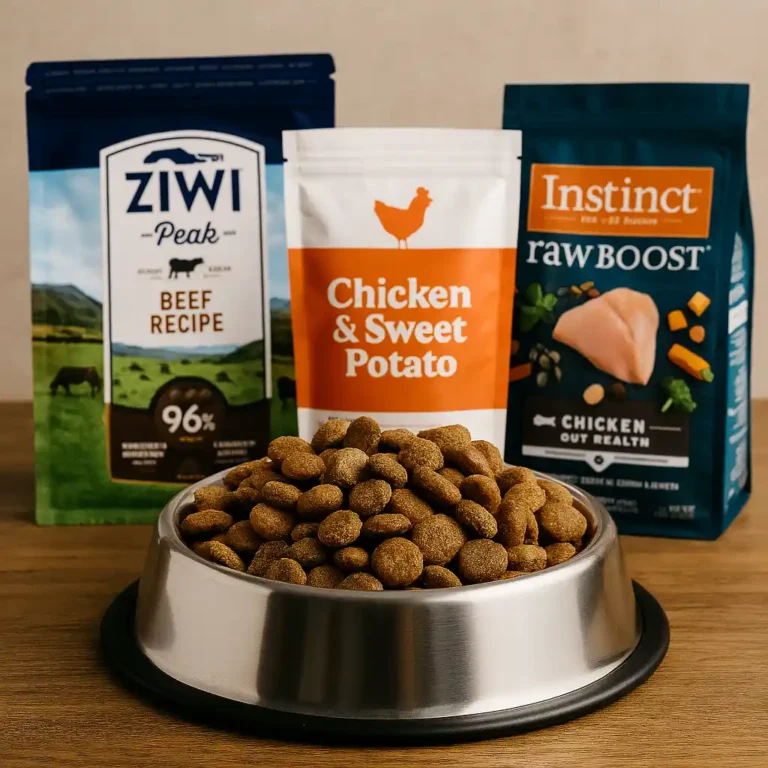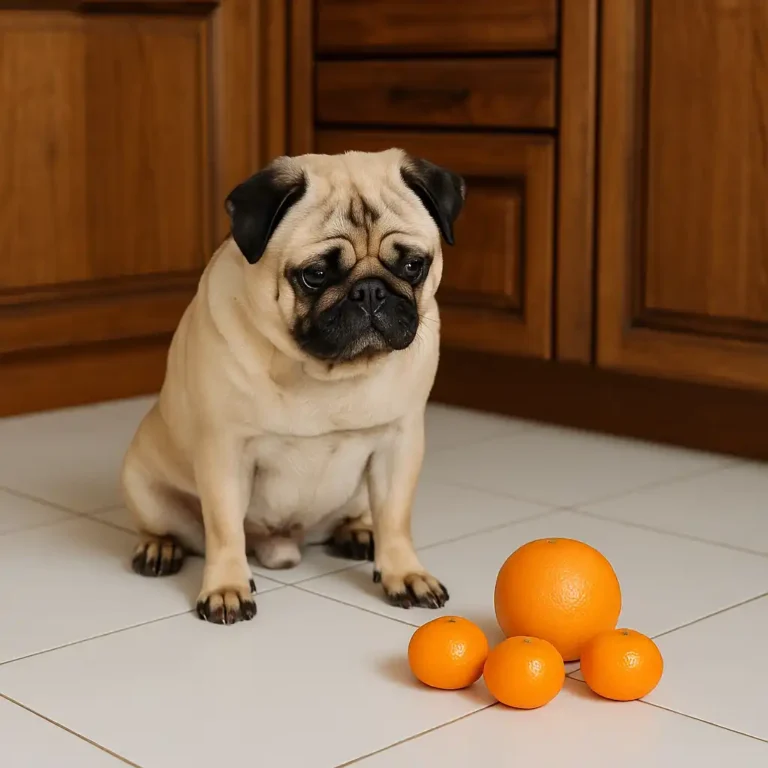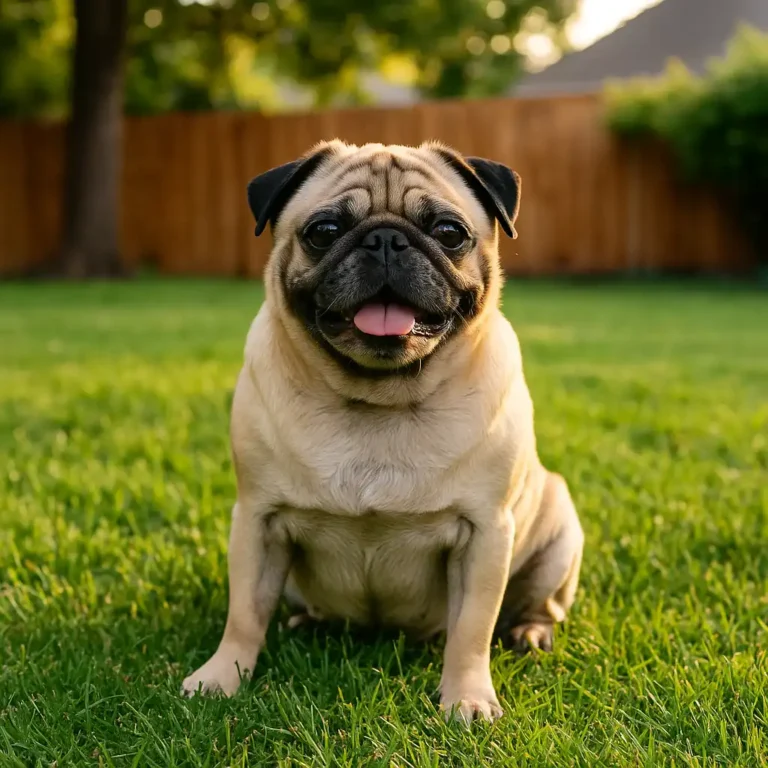Pug Diet and Nutrition Guide – What to Feed and What to Avoid
Disclosure: This post contains affiliate links. As an Amazon Associate, I earn from qualifying purchases—at no extra cost to you.
Last Updated: September 25, 2025
Feeding your pug isn’t just about filling their bowl. The right diet helps manage their weight, supports breathing, and gives them steady energy for everyday play. Since pugs are prone to obesity and sensitive digestion, smart food choices make a big difference.
👉 For a closer look at product options, start with our guide on choosing the right dog food for pugs.
🔍 What Makes a Healthy Pug Diet
A good pug diet balances protein, fat, carbs, vitamins, and minerals. Too many fillers or overly processed ingredients can cause digestive issues or lead to extra weight.
Look for high-quality protein, moderate fat, and easy-to-digest carbs. This mix supports healthy skin, helps reduce breathing strain, and keeps your pug active without feeling sluggish.
🔍 Best Everyday Food Choices for Pugs
Consistency is key when feeding pugs. Many owners rely on premium dry or wet foods that deliver complete nutrition in the right portions. Puppies, on the other hand, need smaller meals more often to fuel their rapid growth.
👉 For puppy-specific advice, check our review of best food for pug puppies.
🔍 Foods to Avoid for Pugs
Some foods that seem harmless can be dangerous for pugs. Grapes, raisins, chocolate, onions, garlic, and uncooked yeast dough are toxic. Even foods like dairy or sugary snacks can upset their stomachs. Plain bread isn’t toxic, but it adds empty calories and offers no real benefit.
👉 See our full list in dog foods to avoid. For details on common questions, check can dogs eat bread and can dogs eat strawberry greek yogurt.
Note: Toxic reactions depend on the amount eaten, your pug’s size, and their individual sensitivity. Always contact a vet if your pug eats something unsafe.
🔍 Safe Treats and Supplements
Treats can be healthy if given in moderation. Eggs provide protein, and most pugs enjoy them when cooked. Coconut milk can be offered in very small amounts, but it may cause stomach upset in some dogs and should never replace water or meals.
👉 Learn more in how many eggs can a pug eat and can dogs drink coconut milk everyday.
🔍 Premium and Special Diets
Some pugs do best on premium diets tailored to sensitive skin, allergies, or higher activity levels. Air-dried and grain-free foods are options for picky eaters or owners looking for higher-quality nutrition.
👉 See our breakdowns in best Ziwi Peak dog food, is Ziwi Peak a good dog food, and best grain free dog food for skin allergies.
Note: The FDA has investigated possible links between grain-free diets and heart issues in some dogs. While no direct cause has been proven, always check with your veterinarian before switching diets, especially if your pug has allergies or sensitivities.
📌 Key Takeaways
- Balanced diets help prevent weight and breathing issues in pugs
- Toxic foods like grapes, raisins, chocolate, onions, garlic, and uncooked yeast dough must always be avoided
- Not all commercial foods are equal — some are better for allergies or digestion
- Puppy feeding needs differ from adult pugs in portion size and frequency
🟢 FAQs
Q: How many times a day should a pug eat?
A: Many adult pugs thrive on two meals daily, though some may benefit from three smaller meals depending on age, metabolism, and health. Puppies usually need three to four meals until they mature.
Q: Are grain-free diets safe for pugs?
A: Grain-free diets can be appropriate for some dogs, especially with allergies, but consult your vet to avoid nutrient gaps.
Q: What human foods are dangerous for pugs?
A: Grapes, raisins, chocolate, onions, garlic, and uncooked yeast dough are unsafe. Too much dairy can also upset digestion.
Q: Do pug puppies need different nutrition from adults?
A: Yes. Puppies need calorie-dense food with extra nutrients to support growth and development.
✅ Conclusion
This pug diet and nutrition guide gives you the essentials for making safe feeding decisions. From everyday meals to safe treats and foods to avoid, the right choices will keep your pug healthy, comfortable, and happy at every stage of life.






